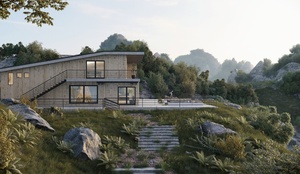More from Bella Virtual Staging USA
More in Politics
Related Blogs
Archives
Social Share
How 3D Rendering Technology is Shaping the Future of Automotive Design
Body
As we move deeper into the 21st century, one of the most transformative technologies reshaping the industry is 3D rendering. This powerful tool is revolutionizing the way cars are designed, tested, and brought to market. From streamlining the design process to enhancing collaboration across teams, 3D rendering technology is rapidly becoming indispensable. In this blog, we will explore how 3D rendering is shaping the future of automotive design, driving efficiency, creativity, and sustainability in the process.
The Evolution of Automotive Design
The automotive industry has come a long way since the days of hand-drawn sketches and physical clay models. Traditional design methods were time-consuming, labor-intensive, and often left little room for experimentation. However, with the advent of 3D rendering technology, the design process has undergone a significant transformation. Designers can now create, modify, and visualize complex vehicle models with unprecedented speed and accuracy. This evolution has not only accelerated the pace of innovation but also opened up new possibilities for creativity and collaboration.
Enhancing Design Precision and Creativity
One of the most significant advantages of 3D rendering in automotive design is the level of precision it offers. Designers can create highly detailed and accurate models of vehicles, down to the smallest components. This precision ensures that the final product is a true reflection of the designer’s vision, with every curve, angle, and surface meticulously crafted. Moreover, 3D rendering allows for rapid prototyping, enabling designers to experiment with different designs, materials, and colors without the need for physical models. This freedom to explore and iterate leads to more innovative and aesthetically pleasing designs.
Streamlining the Design Process
The traditional automotive design process was often a lengthy and complex affair, involving multiple iterations and physical prototypes. 3D rendering technology has streamlined this process by allowing designers to create and modify virtual models in real time. Changes can be made instantly, and the effects of those changes can be visualized immediately. This not only speeds up the design process but also reduces the cost associated with physical prototypes. Additionally, 3D rendering software can simulate various real-world conditions, such as lighting and environmental factors, helping designers to assess the performance and appearance of their designs under different scenarios.

Facilitating Collaboration and Communication
In today’s globalized world, automotive design often involves collaboration between teams spread across different locations. 3D rendering technology facilitates this collaboration by providing a common platform where designers, engineers, and stakeholders can view and interact with the same virtual model. This shared visualization helps to bridge the gap between different departments, ensuring that everyone is on the same page. It also allows for more effective communication with clients, who can see and provide feedback on the design before it goes into production. This collaborative approach not only improves the quality of the final product but also reduces the likelihood of costly design errors.
Reducing Time-to-Market
In the highly competitive automotive industry, time-to-market is a critical factor. The faster a new vehicle can be designed, tested, and launched, the better the chances of success. 3D rendering technology plays a crucial role in reducing time-to-market by streamlining the entire design and development process. With the ability to create and test virtual models quickly, manufacturers can bring new designs to market much faster than before. This speed not only gives companies a competitive edge but also allows them to respond more effectively to changing market demands and consumer preferences.
Improving Sustainability in Automotive Design
Sustainability is becoming an increasingly important consideration in automotive design, and 3D rendering technology is helping to drive this shift. By reducing the need for physical prototypes, 3D rendering significantly cuts down on material waste and energy consumption. Additionally, the ability to simulate different materials and manufacturing processes allows designers to explore more sustainable options without the cost and time associated with traditional methods. This focus on sustainability is not only beneficial for the environment but also aligns with the growing consumer demand for eco-friendly vehicles.
Conclusion
As we look to the future, it is clear that 3D rendering technology will continue to play a pivotal role in shaping the automotive industry. Its ability to enhance design precision, streamline processes, facilitate collaboration, and reduce time-to-market makes it an invaluable tool for manufacturers. Moreover, its contribution to sustainability and customer experience underscores its importance in a rapidly changing market. As 3D rendering technology continues to evolve, we can expect to see even more groundbreaking innovations in automotive design, paving the way for a new era of creativity, efficiency, and sustainability.













Comments